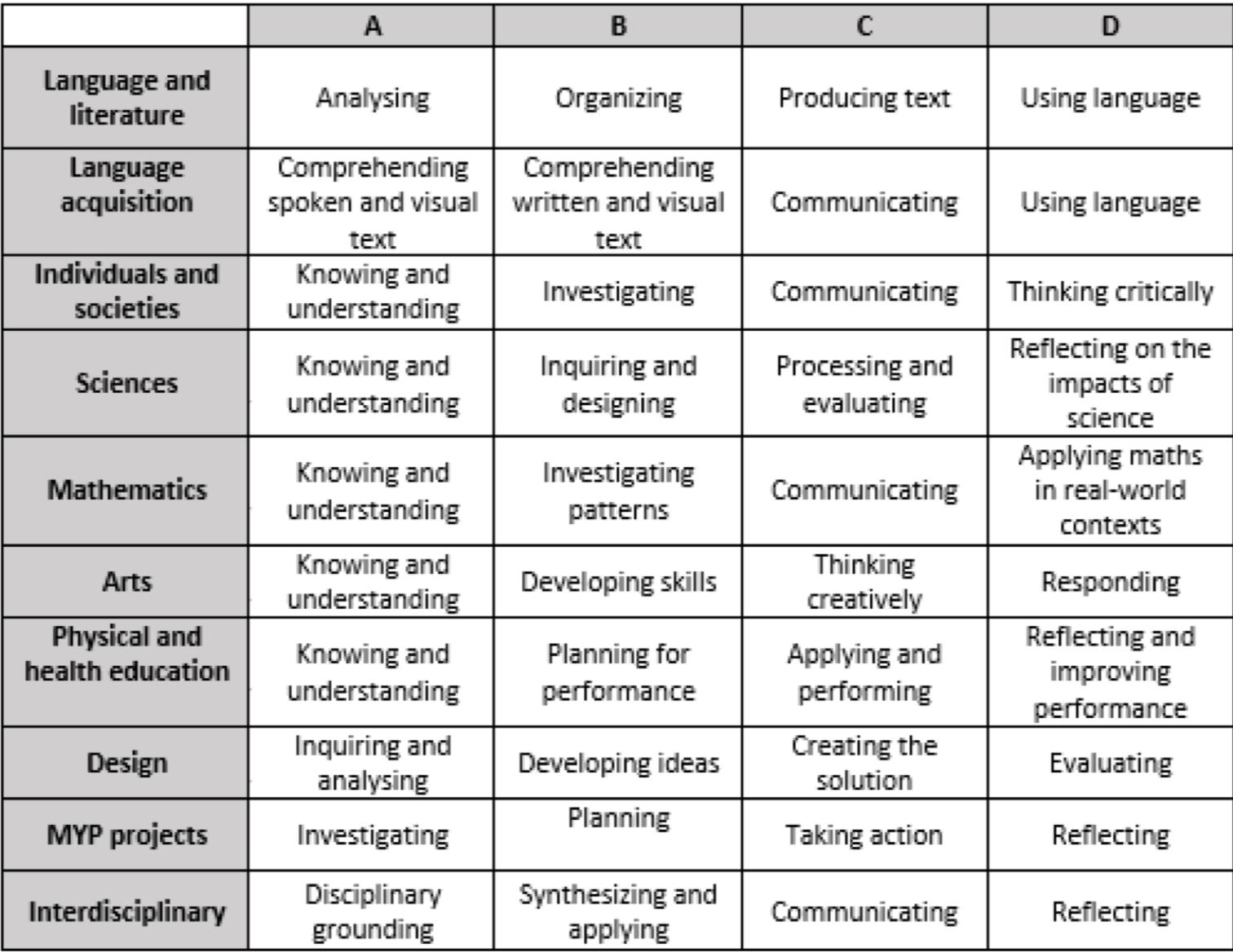Criteria and achievement levels
Each of the eight subject areas detailed on the following pages has four criteria specific to the subject, which form the basis of assessment in the subject. Each of these criteria has associated with it levels of achievement and associated descriptors by which the student’s work is assessed.
Teachers will set tasks to address one or more criteria and will assess students against the pertinent criteria by matching the student’s performance against the descriptor that best reflects the performance of the student.
The MYP assessment criteria across subject groups can be summarised as follows. (see attachment)
Assessment and reporting
Where more than one teacher is involved, common standards are set (standardisation of internal assessment).
Student performance is assessed against the published assessment criteria for each subject.
Criterion levels totals for each subject are established for each student.
Teachers apply the grade boundaries to establish final grade for the student in each subject.
The College regularly reports on student progress by aligning with the MYP objectives using the prescribed subject-group assessment criteria. The assessment criteria for years 1, 3 and 5 of the programme are used when assessing in each subject area. Australian BOSTE outcomes are also assessed simultaneously with MYP criterion objectives. All BOSTES outcomes for each subject area are assessed.
MYP Grading
The final common assessment task (research, test, exam, assignment etc.) is part of the continuous MYP assessment process which should assist in confirming the most consistent level of student achievement in each subject area. Once the most consistent level of achievement for each criteria has been established, these are then added together to arrive at a final MYP mark for each subject. This total is then converted to the final MYP grade using the 1-7 scale below.
1: 1-5
2: 6-9
3: 10-14
4: 15-18
5: 19-23
6: 24-27
7: 28-32
General grade descriptors
Grade 1
Minimal achievement in terms of the objectives.
Grade 2
Very limited achievement against all the objectives. The student has difficulty in understanding the required knowledge and skills and is unable to apply them fully in normal situations, even with support
Grade 3
Limited achievement against most of the objectives, or clear difficulties in some areas. The student demonstrates a limited understanding of the required knowledge and skills and is only able to apply them fully in normal situations with support.
Grade 4
A good general understanding of the required knowledge and skills, and the ability to apply them effectively in normal situations. There is occasional evidence of the skills of analysis, synthesis and evaluation.
Grade 5
A consistent and thorough understanding of the required knowledge and skills, and the ability to apply them in a variety of situations. The student generally shows evidence of analysis, synthesis and evaluation where appropriate and occasionally demonstrates originality and insight.
Grade 6
A consistent and thorough understanding of the required knowledge and skills, and the ability to apply them in a wide variety of situations. Consistent evidence of analysis, synthesis and evaluation is shown where appropriate. The student generally demonstrates originality and insight.
Grade 7
A consistent and thorough understanding of the required knowledge and skills, and the ability to apply them almost faultlessly in a wide variety of situations. Consistent evidence of analysis, synthesis and evaluation is shown where appropriate. The student consistently demonstrates originality and insight and always produces work of high quality.
BOSTES Grading
A
The student has an extensive knowledge and understanding of the content and can readily apply this knowledge. In addition, the student has achieved a very high level of competence in the processes and skills and can apply these skills to new situations.
B
The student has a thorough knowledge and understanding of the content and a high level of competence in the processes and skills. In addition, the student is able to apply this knowledge and these skills to most situations.
C
The student has a sound knowledge and understanding of the main areas of content and has achieved an adequate level of competence in the processes and skills.
D
The student has a basic knowledge and understanding of the content and has achieved a limited level of competence in the processes and skills.
E
The student has an elementary knowledge and understanding in few areas of the content and has achieved very limited competence in some of the processes and skills.
Reporting to parents will include a written report twice a year, information sessions and interviews.

